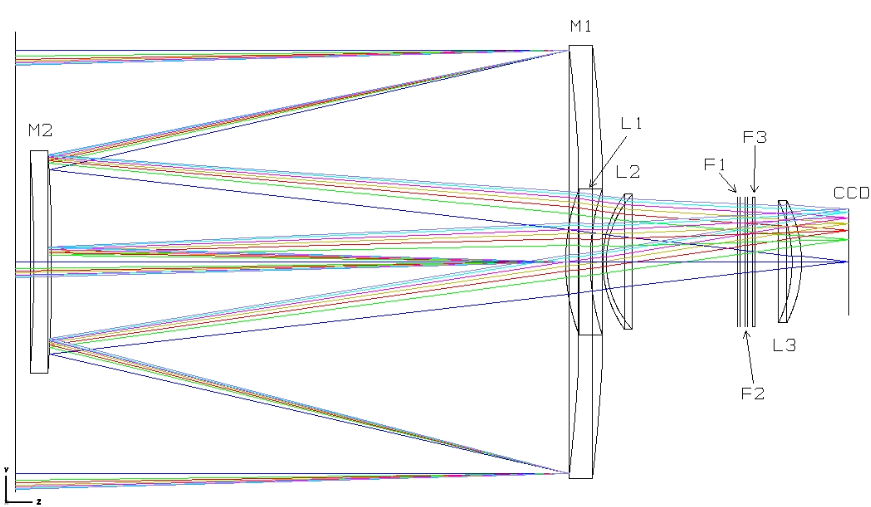buffy said:
mollwollfumble said:
Tau.Neutrino said:
Researchers Created Lenses A Thousand Times Thinner To Hopefully Eliminate Ugly Smartphone Camera Bumps
https://www.gizmodo.com.au/2019/10/researchers-created-lenses-a-thousand-times-thinner-to-hopefully-eliminate-ugly-smartphone-camera-bumps/
Cheaper space telescopes made tiny
I propose we design a space telescope using such lenses and placed into micro cube sats
Then run yearly comps to design better and better ones.
Or mollwollfumble’s blind spot telescope. It needs lenses. The plan is similar to Pan-STARRS three lenses.

I know of two types of flat lenses. Fourier and metamaterial.
And Fresnel. Which are horrible for image quality.
Oops, Fresnel and metamaterial.
Why are Fresnel horrible for image quality? Could it just be poor manufacturing? I have seen a stick-on plastic Fresnel lens for the back window of a van that gave surprisingly good quality. It was a one-way lens – if installed back to front it would have had horrible quality.
I can imagine that Fresnel lenses could act better with some light wavelengths than others. As the thickness increases, the colour selectivity becomes more uniform.
“As detailed in a new research paper published in the Proceedings of the National Academy of Sciences, the lens takes an approach similar to the giant solar furnaces in operation around the world. Instead of a giant single reflective element that would be prohibitively expensive and challenging to manufacture, these furnaces use a sprawling array of smaller reflectors each positioned at varying but specific angles to reflect their light onto a central tower.”
That’s a Fresnel lens.
“Manufacturing the lenses also required the team to develop a new fabrication process, a new polymer, and custom algorithms to calculate the shape and position of each microstructure”.
Fine, but once a lens has been fabricated once, an inverse mold can be made, and that can just be pressed into almost any semi-molten plastic which sets to form a perfect copy. Makes it very much cheaper to mass produce than current thick lenses.
I asked an astronomical meeting a couple of years ago why telescope lenses weren’t made Fresnel. The speaker had no idea why.
One thing I’m not so absolutely sure of is whether there would be lots of scattered light from the ridge tops. I’m not sure whether it’s a problem in the first place and if so whether the solution is easy.
“who wouldn’t have to carry heavy … telescopic lenses on missions”
Hell yes. Again not sure how easy it would be to reduce the focal length beyond what is already used – if at all. Catadioptric lenses are already less than a quarter the weight of conventional refractor optics for large diameter telephoto.
Now looking at original research article. The title opens another can of worms. “Broadband lightweight flat lenses for long-wave infrared imaging”. Broadband is bleedin’ marvellous, long-wave infrared means they’re not down to an ideal length scale for optical yet. How do they get broadband? And is the special plastic formulation necessary only because it has to be transparent to thermal infrared?
¿And does this have immediate military uses, which it would have if the lens doesn’t need to be cooled.
Let’s have a look at the research article.
> A 10 μm thick layer for a wavelength range of 8 μm to 12 μm.
And that’s a wideband Fresnel? That’s a big breakthrough. Thermal infrared is – let’s check wikipedia “Extensive uses for military and civilian applications include target acquisition, surveillance, night vision, homing, and tracking. Humans at normal body temperature radiate chiefly at wavelengths around 10 μm”. Exact right ballpark for thermal imaging.
> In order to attain high transparency, conventional refractive lenses in the LWIR band require materials such as silicon, germanium, or chalcogenide glasses.
Yes.
> Here, we show that, by appropriately designing thin Multilevel Diffractive Lenses (MDLs), we can correct for image aberrations, including chromatic aberrations in the LWIR band.
Multilevel Diffractive Fresnel lens. I see now why they need a computer algorithm. Spacing or height can’t be anything like uniform.
> Recently, we showed that, when appropriately designed, MDLs could perform better than metalenses, while being easier to fabricate.
:-) So mollwollfumble was right.
> First, we designed rotationally symmetric MDLs, whose constituent element is a ring of width equal to 8 μm, and whose height is determined by nonlinear optimization.
OK. Spacing uniform, height nonuniform.
Focussing performance best at 8 and 12 μm, worst at 9 μm.
Not great image quality. Video of a thermal image of a human being. https://static-movie-usa.glencoesoftware.com/webm/10.1073/155/9e07f2a0c12d85bddd99ce1ba5c9d84cc2a41709/pnas.1908447116.sm03.webm
Still looks to me like immediate defence applications, with a follow-on to other thermal imaging equipment such as IR sensors.
